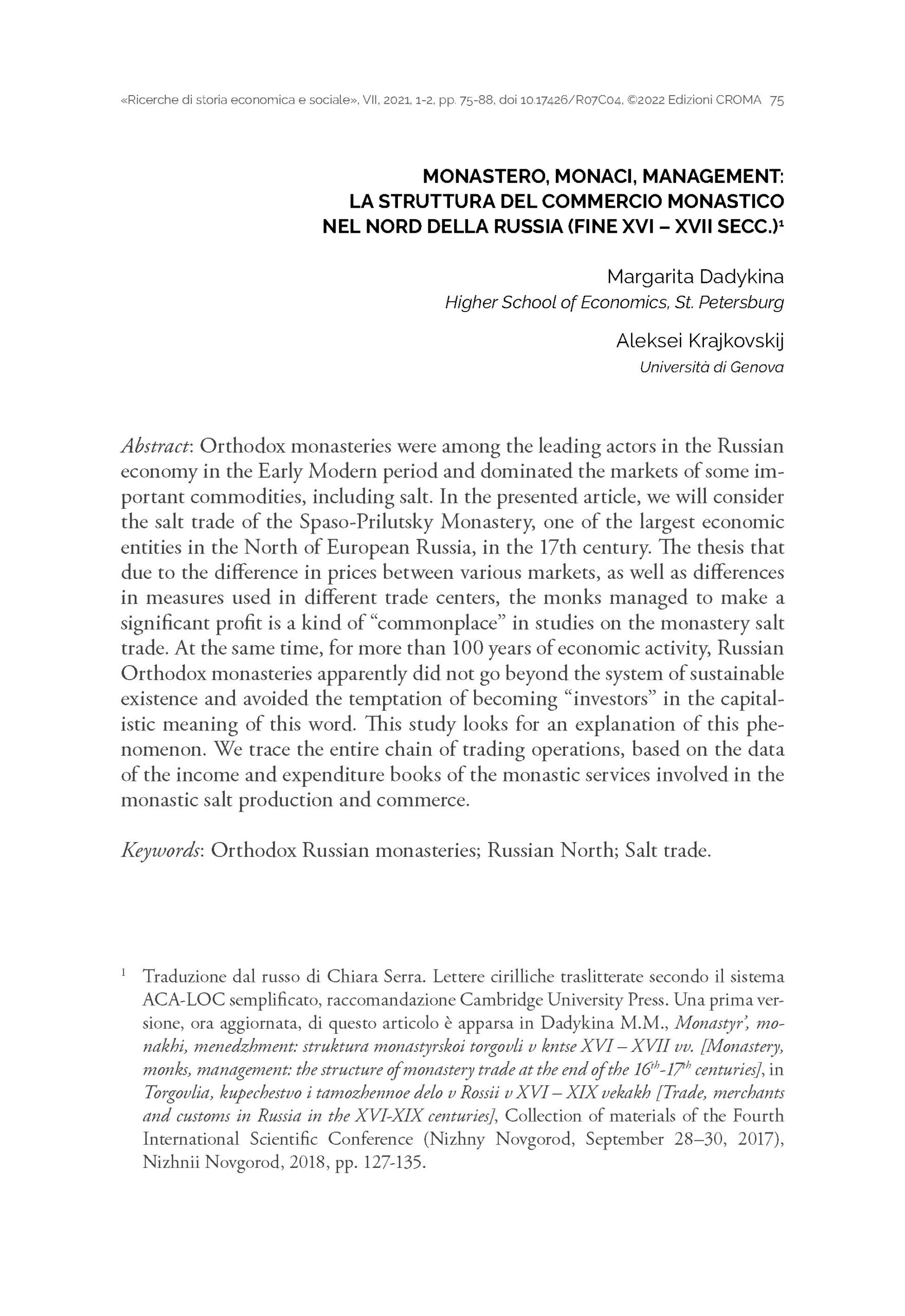Monastero, monaci, management: struttura del commercio monastico nel nord della Russia (fine XVI–XVII secc.)
6,00 €
Abstract: Orthodox monasteries were among the leading actors in the Russian economy in the Early Modern period and dominated the markets of some important commodities, including salt. In the presented article, we will consider the salt trade of the Spaso-Prilutsky Monastery, one of the largest economic entities in the North of European Russia, in the 17th century. The thesis that due to the difference in prices between various markets, as well as differences in measures used in different trade centers, the monks managed to make a significant profit is a kind of “commonplace” in studies on the monastery salt trade. At the same time, for more than 100 years of economic activity, Russian Orthodox monasteries apparently did not go beyond the system of sustainable existence and avoided the temptation of becoming “investors” in the capitalistic meaning of this word. This study looks for an explanation of this phenomenon. We trace the entire chain of trading operations, based on the data of the income and expenditure books of the monastic services involved in the monastic salt production and commerce.

